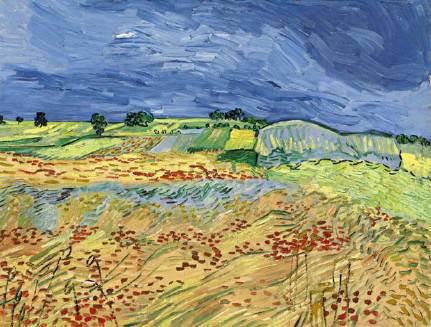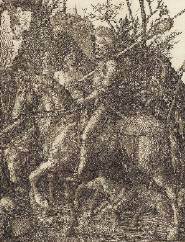CEZANNE, MATISSE AND PICASSO TO LEAD CHRISTIE’S IMPRESSIONIST AND MODERN ART EVENING SALE
Impressionist and Modern Art Evening Sale – November 6, 2007
]]>
New York – Christie’s Evening Sale of Impressionist and Modern Art on November 6, with previews in New York starting on November 2, will be the quintessential ‘museum of an instant,’ showcasing a tightly edited ensemble of paintings and sculpture that are among the most riveting and cardinal artistic creations of the late 19th/early 20th century. Works by Cézanne, Matisse, Modigliani, Signac and Picasso will be highlighting the sale alongside paintings by Balthus, Beckmann, Toulouse- Lautrec and Léger.
“I’m still going to the Cézanne room … the puzzlement and insecurity of one’s confrontation with his work… and then suddenly one has the right eyes.” (Rainer Maria Rilke, October 10, 1907)
Paul Cézanne, the father of modernism to many, is represented in the sale with an extraordinary group of five watercolors and two paintings. Of these, Portrait de Vallier, 1904/06 (estimate: $15 – 25 million) is arguably the finest watercolor to have come to market in recent memory. The work portrays Vallier, the gardener who tended the property surrounding Cézanne’s studio in the Chemin des Lauves. Vallier, who consented to pose for portraits on a regular basis during the last years of his life, is seen against a network of undulating tree trunks and verdant foliage. The Vallier portrait fits into the series of peasant and laborers portraits which Cézanne had begun in the late 1880s but it transcends these works in its powerful emotional charge. In fact, the work may even be considered a metaphorical self-portrait, emblematic of the close identification of the artist with his model.
Cézanne’s depiction of la Montagne Sainte-Victoire, set in a rocky and rugged landscape dotted with prehistoric caves and Celtic, Roman and medieval ruins, is widely regarded as one of the major catalysts in the development of cubism. During the last years of his life, the artist frequently painted
the vast, isolated terrain east of Aix-en-Provence, and the sale offers two exquisite drawings of the subject, La Montagne Sainte Victoire vue des Lauves, 1902/06 and the double-sided Route tournante with a recto depicting La Montagne Sainte-Victoire vue des Lauves (estimate: $5 – 7 million each). In total Cézanne painted seventeen watercolors in 1902/06 which depict the craggy peak of the Montagne Sainte-Victoire from the slopes of Les Lauves. Although these can not be regarded as an ensemble, they do represent the last and most important series of landscapes the artist painted of this seminal motif.
Les Jas de Bouffan, painted in 1890/94 (estimate: $12 – 16 million), depicts the ornamental pool which stood in front of the house and which was one of the artist’s favorite motifs on the property. Jas de Bouffan, its house and gardens, was the site of some of Cézanne’s earliest artistic explorations in the 1860s when he began exploring outdoors paintings and would remain his main source of inspiration for decades to come. The present painting, which has been described as ‘Cézanne’s farewell to the Jas’ is both the artist’s final view of the pool as well as the very last view Cézanne executed of his family’s home near Aix and occupies a very critical place in his oeuvre.
Compotier et assiette de biscuits (estimate: $10 – 15 million), painted circa 1877, is one of several still-lives of fruit and sweets that Cézanne painted in 1877/79. In this painting, Cézanne, who had been compared by Roger Fry to Rembrandt for his mastery of the still-life genre and famously said “With an apple, I want to astonish Paris,” renders red and yellow apples nestling in a bed of dark green
leaves which sets off the table cloth and the fruit bowl. Interestingly, the wallpaper shown in the background of the painting provides a clue as to its dating as it has been associated with the apartment on rue de l’Ouest where Cézanne and his wife lived from the end of 1876 through March of 1878 and again in the spring of 1879.
In vibrancy, color-harmony and expressiveness, few portraits reach the heights Modigliani conquered with his Portrait du sculpteur Oscar Miestchaninoff, 1916 (estimate: $18 – 25 million). He depicts his subject seated with his hands firmly planted on his lap, and views him frontally. Although linear rhythms, reminiscent of African art and of Modigliani’s own work as a sculptor, are clear, Miestchaninoff is very much a real-life person with real-life traits running through the work.
Picasso’s Femme accroupie au costume turc (Jacqueline), painted on 26 November 1955 (estimate on request), is the crowning, definitive painting in a group of ten portraits of his companion Jacqueline Roque which the artist painted toward the end of 1955, and which all depict the odalisque, the exotically robed or nude figure of an alluring young woman.
‘Picasso form, Matisse color’ were Kandinsky’s painterly ideals, and the sale offers a spectacular example by each of these two fabulous masters. Interestingly enough, both paintings have as a subject the exotic and sensuous odalisque, a recurrent favorite focus in art history ever since 18th century Vienna surrendered to the alla turca theme and the highly mysterious qualities of the Ottoman Empire inspired composers and artists alike. Matisse painted odalisques as the mainstay of his art for more than two decades while he was at the height of his career. Picasso claimed to have inherited the odalisque from Matisse upon the latter’s death in 1954 and in one form or another, this subject dominated the work of his final years, until his death in 1973. L’Odalisque, harmonie bleue, 1937 (estimate: $15 – 20 million) by Henri Matisse, portrays Lydia Delectorskaya, a blond Russian émigrée who served as a model for several of his paintings. She is attired in a chiffon jacket with translucent lace sleeves and green billowing silk pants. The contours of her figure dovetail with the curving stems of the flowers, accentuating Matisse’s femme-fleur idea, the woman as epitome of beauty, sensuality and fertility. “I do Odalisques in order to do nudes,” Matisse declared in 1929. However, for the viewer who is observing the atmosphere of idleness and fantasy which hovers over L’Odalisque, while losing oneself completely in the exotic and luxuriant décor of the secluded environment which is so attractive to the voyeuristic gaze and which creates such strong seductively sensual impressions, this simple phrase represents nothing if not a monumental understatement.
After setting a world auction record for Signac in the May sale with Arrière du tub, at $11.68 million, Christie’s follows up with another superb masterpiece by this pointillist artist par excellence – Cassis. Cap Canaille (estimate: $8 – 12 million), painted in 1889. Signac painted five important and quintessentially Neo-Impressionist canvases during his stay in Cassis, a small town on the Mediterranean coast, during April-June 1889.
Auction: Impressionist and Modern Art Evening Sale November 6 at 6.30 p.m. Viewing: Christie’s Galleries at Rockefeller Center November 2 – 6 Traveling exhibition including Hong Kong, Moscow and London
Follow us on:


